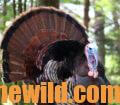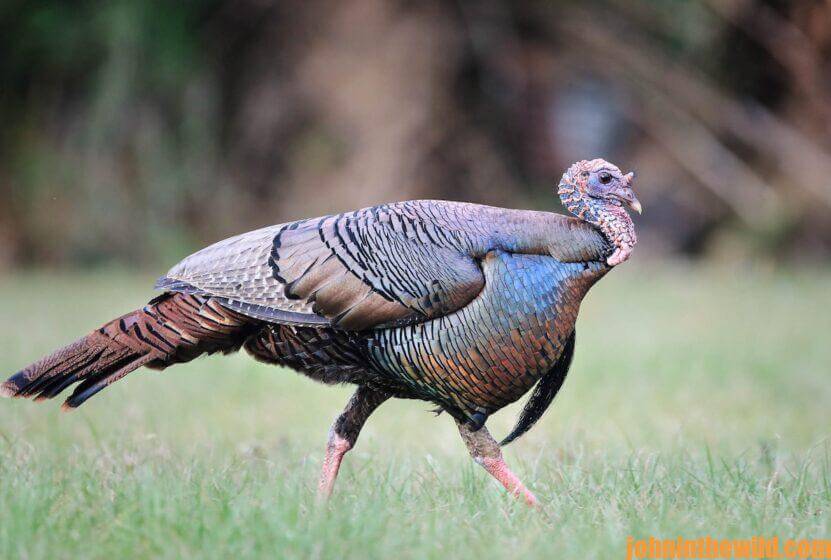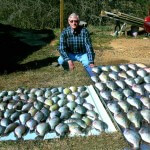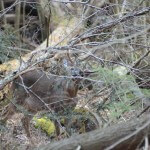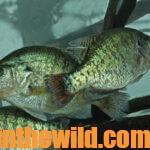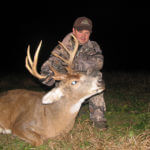Editor’s Note: Three secrets will help you to consistently take turkeys – location, location, location. Probably hunters bag 90 percent of their turkeys by sitting in places turkeys want to walk to anyway. Now before turkey season starts is the time to scout and identify where turkeys are. The big mistake many turkey hunters make when scouting is using hen calls to make turkeys gobble. To solve this problems, don’t take any calls with you when you’re scouting except locator calls like those of crows, owls, pileated woodpeckers and hawks and a coyote howler.
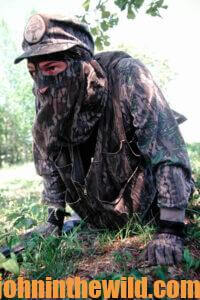
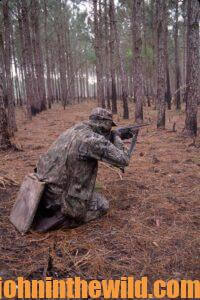 Preston Pittman of Mississippi, the founder of Pittman Game Calls and winner of numerous national, regional and state turkey-calling contests, says, “Some years ago while hunting in Florida, I called-up three Osceola gobblers. My friend, outdoor writer, John Phillips, bagged one, and the other two gobblers ran into a burnt-pine plantation about 150-yards away. Since I cut and cackled to the gobblers right after John had shot, within about 10 minutes, they began to gobble again. But because they wouldn’t come back to me, I used an old tactic from Ben Rodgers Lee, five time World Champion Turkey Caller and expert turkey hunter, of staying low to move close to the gobblers. I believe 75 percent of all turkey hunters will have to use some form of crawling to get in and get a shot at some time in their turkey-hunting careers. But always keep safety foremost in your mind.
Preston Pittman of Mississippi, the founder of Pittman Game Calls and winner of numerous national, regional and state turkey-calling contests, says, “Some years ago while hunting in Florida, I called-up three Osceola gobblers. My friend, outdoor writer, John Phillips, bagged one, and the other two gobblers ran into a burnt-pine plantation about 150-yards away. Since I cut and cackled to the gobblers right after John had shot, within about 10 minutes, they began to gobble again. But because they wouldn’t come back to me, I used an old tactic from Ben Rodgers Lee, five time World Champion Turkey Caller and expert turkey hunter, of staying low to move close to the gobblers. I believe 75 percent of all turkey hunters will have to use some form of crawling to get in and get a shot at some time in their turkey-hunting careers. But always keep safety foremost in your mind.
“In this pine plantation where the Florida turkeyswere holding, the trees were no more than 6 inches in diameter. I could see in all 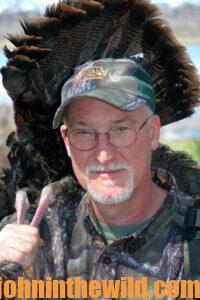 directions. However, that meant that the turkeys also could see me. The closest limbs were
directions. However, that meant that the turkeys also could see me. The closest limbs were 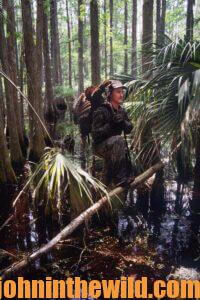 6-feet above my head. In this freshly-burnt timber where I could see in all directions and knew no one other than John hunted on the property, I became a hen turkey. I kept my head low to the ground, and my fanny up, just like a turkey would, and even shook my rear end. As I moved closer to the turkeys in this hiney-high position, I scratched in the burnt pine needles, threw dust in the air like a hen would and didn’t move in a straight line but rather to the left and back to the right. Once I got within calling distance, I gave soft clucks and purrs. The two gobblers broke into an all-out gobbler fight before the bigger bird beat-up the other gobbler. The loser came running straight toward me, and I took him when he was less than 30-yards away. The terrain and the lack of hunters enabled me to use this weird tactic to take the gobbler that day. A master turkey hunter figures-out what a turkey wants to do, and where he wants to be. Then that outdoorsman gets to where the gobbler is going before the gobbler does.”
6-feet above my head. In this freshly-burnt timber where I could see in all directions and knew no one other than John hunted on the property, I became a hen turkey. I kept my head low to the ground, and my fanny up, just like a turkey would, and even shook my rear end. As I moved closer to the turkeys in this hiney-high position, I scratched in the burnt pine needles, threw dust in the air like a hen would and didn’t move in a straight line but rather to the left and back to the right. Once I got within calling distance, I gave soft clucks and purrs. The two gobblers broke into an all-out gobbler fight before the bigger bird beat-up the other gobbler. The loser came running straight toward me, and I took him when he was less than 30-yards away. The terrain and the lack of hunters enabled me to use this weird tactic to take the gobbler that day. A master turkey hunter figures-out what a turkey wants to do, and where he wants to be. Then that outdoorsman gets to where the gobbler is going before the gobbler does.”
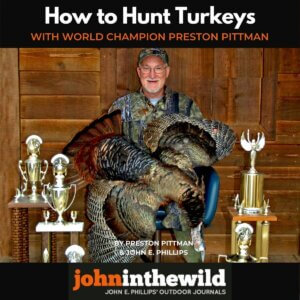 To learn more about hunting turkeys successfully, visit John E. Phillips’ Amazon book page at https://www.amazon.com/John-E.-Phillips/e/B001HP7K6O. For even more information from one of the top turkey hunters and callers, go to https://www.amazon.com/gp/product/B00CFP9V2Q/ref=dbs_a_def_rwt_hsch_vapi_taft_p1_i2
To learn more about hunting turkeys successfully, visit John E. Phillips’ Amazon book page at https://www.amazon.com/John-E.-Phillips/e/B001HP7K6O. For even more information from one of the top turkey hunters and callers, go to https://www.amazon.com/gp/product/B00CFP9V2Q/ref=dbs_a_def_rwt_hsch_vapi_taft_p1_i2
to see the book, “How to Hunt Turkeys with World Champion Preston Pittman,” available in Kindle, print and Audible. You may have to copy and paste this link into your browser. (When you click on the book, notice on the left where Amazon says you can read and hear 10% of the book for free). On the right side of the page and below the offer for a free Audible trial, you can click on Buy the Audible book. You also can order “The 10 Sins of Turkey Hunting with Preston Pittman,” available in Kindle at https://www.amazon.com/gp/product/B00D7NQFS8/ref=dbs_a_def_rwt_bibl_vppi_i10.
Tomorrow: Don’t Spook Turkeys When Moving


